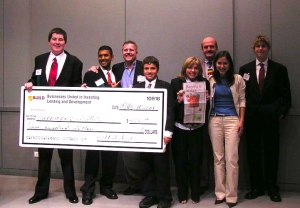Over this past summer, I had the privilege of working at LEAD. LEAD is a summer job open to teenagers and it provides them with leadership skills so that they can make a difference in their community (East Palo Alto). As many of us know, East Palo Alto is not the best neighborhood existent. East Palo Alto is a small community that lacks many key things; LEAD, however helped me and others fill in a very important gap in the lives of many children growing up in this neighborhood. As children grow up they need to feel loved, either by their parents or by someone whom they grow up with. A way to show a child that you love them is by giving them your attention, even if it’s for the shortest time. However, many parents work during the day so they need a place for their children to be and feel loved and they have that opportunity at RYAA.
As LEAD took on a load of kids attending RYAA, I was shown that kids really do need attention and love from any person possible. Every day we would work with these kids, which gave us the opportunity to build a relationship with them personally. Some of the relationships we built developed over the course of one day or even just a second. What helped us build these relationships was making them feel important. A simple high-five made the day of any one of those kids. A smile from them completed our goal of making a change in the community. However, I must admit that it was hard keeping calm while working with so many active kids. Sometimes I felt like I couldn’t handle the kids, but I learned a trick to get the children to realize they needed to behave. I would focus on the ones behaving, and while my attention was still given equally would the children did not realize that.
I thought that when it was all over I would never see the kids again, but I was wrong. I bump into the kids all the time and it’s awesome because they remember you so well and ask for the other LEADers. Overall I think it was a great experience and I can confidently say that the kids were touched by LEAD’s work because smiles and love, to a kid, is worth more than anything in the world. I’d also like to acknowledge Shannon’s work and everything he has done for East Palo Alto because if it weren’t for him the lives of these kids would be totally different. I want to thank him for allowing me to be part of LEAD and I’m sure the kids thank him as well for putting together such a great camp.
by Cesar Perez



